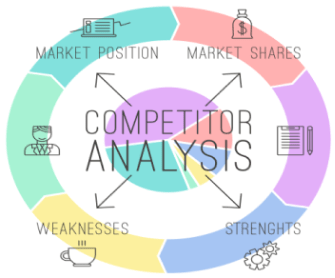Cutting Costs Strategically
April 3, 2025
 Cutting Costs Strategically
Cutting Costs Strategically
The business environment today has become extremely competitive. Companies are not only facing competition from their local competitors but also from global ones. Different economic and geopolitical factors make global supply chains necessary. The problem with having global supply chains is that operations become broad and complex. It is much easier to manage operations located…
 What is Competitive Advantage in the Field of Strategic Management?
What is Competitive Advantage in the Field of Strategic Management?
What is Competitive Advantage? It is a truism that strategic management is all about gaining and maintaining competitive advantage. The term can be defined to mean “anything that a firm does especially well when compared with rival firms”. Note the emphasis on comparison with rival firms as competitive advantage is all about how best to…
 Core Competencies – An essential for Organizational Success
Core Competencies – An essential for Organizational Success
What is Core Competency? Core competency is a unique skill or technology that creates distinct customer value. For instance, core competency of Federal express (Fed Ex) is logistics management. The organizational unique capabilities are mainly personified in the collective knowledge of people as well as the organizational system that influences the way the employees interact.…
Organizations must operate within a competitive industry environment. They do not exist in vacuum.
Analyzing organization’s competitors helps an organization to discover its weaknesses, to identify opportunities for and threats to the organization from the industrial environment.
While formulating an organization’s strategy, managers must consider the strategies of organization’s competitors.
Competitor analysis is a driver of an organization’s strategy and effects on how firms act or react in their sectors.
The organization does a competitor analysis to measure/assess its standing amongst the competitors.

Competitor analysis begins with identifying present as well as potential competitors. It portrays an essential appendage to conduct an industry analysis.
An industry analysis gives information regarding probable sources of competition (including all the possible strategic actions and reactions and effects on profitability for all the organizations competing in the industry). However, a well-thought competitor analysis permits an organization to concentrate on those organizations with which it will be in direct competition, and it is especially important when an organization faces a few potential competitors.
Michael Porter in Porter’s Five Forces Model has assumed that the competitive environment within an industry depends on five forces:
These five forces should be used as a conceptual background for identifying an organization’s competitive strengths and weaknesses and threats to and opportunities for the organization from it’s competitive environment.
The main objectives of doing competitor analysis can be summarized as follows:
Competitors should be analyzed along various dimensions such as their size, growth and profitability, reputation, objectives, culture, cost structure, strengths and weaknesses, business strategies, exit barriers, etc.
Your email address will not be published. Required fields are marked *